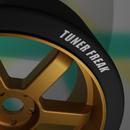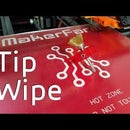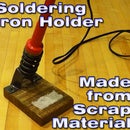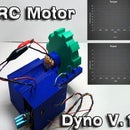Introduction: Revitalize Old Sunglasses
Anyone who knows me knows two things about me: 1) I don't like to spend a lot of money 2) I like to customize my stuff to look like no one else's. So when I noticed my sunglasses were getting rather raggedy I decided to give them a new look.
In this Instructable I'll show you how to refurbish old sunglasses and give them a personal touch.
Step 1: Materials
For this project you'll need the following:
- Spray paint of your choosing (I'll be using gold, black, and a clear glosscoat)
- Masking Tape (preferably painter's tape, scotch tape will work in a pinch)
- Xacto or similar knife
- Scouring Pad or medium/fine sandpaper (probably around 500-1000 grit or so)
- Glass Cleaner
- Paper Towel
- #0 Phillips Screwdriver
Optional:
- 3D Printer for replacing accent pieces
Step 2: Preparation
First, let's remove the earpieces from the sunglasses. This will make our life a bit easier in the following steps. They should be secured with one screw located near the hinge on the bottom of each earpiece. Remove these screws, being careful not to strip the heads, and place them in a safe spot where they won't get lost.
Next we'll want to protect the lenses. This can be done using masking tape, or if you can easily remove the lenses that will also work. In the former we will want to cover up each lens front and back, then trim the excess tape using an Xacto knife. Make sure there are no exposed areas of the lens as the paint will find any and all openings when we spray the frame later.
My glasses had a decorative chrome insert on each earpiece, both of which fell out at some point during use. If your glasses have any pieces that you'd like to remain unaltered, go ahead and mask those off now. Otherwise, you can either remove them or prep them for paint in the next step.
With everything masked off we can begin prepping the frame for paint. Using a scouring pad or a piece of ~1000 grit sandpaper, rough up the plastic and remove any plastic films or other coatings on the frame. In my case, the front of the frame was coated in ordinary paint, but the backside had a black film covering it. While you can paint over this, I would recommend removing as much as you can as the paint will adhere better to ruffed up plastic than a smooth film. The paint doesn't have to be completely removed, just make sure the surface is free of imperfections and thoroughly scuffed. This will give the paint a good surface to adhere to.
Finally, clean the frames using glass cleaner and paper towels. Be sure to remove any dust or residue and avoid handling the frame as much as possible. Oil from your hands can cause the paint to fisheye so try to minimize how much you handle the frame after cleaning.
Step 3: Painting and Printing
It's finally time to paint our shades! For this section I recommend watching the video at the beginning of the Instructable, as it will likely be easier to understand these instructions by seeing the process demonstrated.
In this case I'll be spraying a gold base coat, a dusting of black on top of that, and finally a few coats of clear glosscoat. This results in a graphite grey finish which turns gold in the sunlight. The glosscoat gives it a glossy finish and helps to seal in the black as it is only dusted on top of the gold. To do this color scheme you'll want to apply a coat of gold and let the paint dry for about 15-30 minutes, or until it's no longer wet but hasn't cured yet. Next, you'll want to spray the surface with black, but start with the can a few feet from the surface and move in until you see the paint start to speckle the surface. Move with rapid, smooth strokes as you spray each part to achieve a nice uniform color. Apply the black until you've achieved your desired shade, less will yield a dark gold, while more will give you more of a dark grey. Once this coat has also been given about 15-30 minutes to dry, apply about two coats of glosscoat. The glosscoat is a lot like a clearcoat, so you'll want to spray it in a similar way. Make sure it goes on wet by moving a bit more slowly on your strokes. Be aware that the glosscoat is quite sticky and takes at least about two-three days to fully cure. For this reason, try to keep your frame from sticking to the surface it's resting on by moving it periodically while applying the glosscoat.
For the gold and the glosscoat I used Testors brand spraypaint. They have a very nice selection of paints, but they are a bit expensive. I've tried a gold base coat with a few coats of their transparent blue before and it looks fantastic. They have a big selection of paints and finishes, so if you'd like to try something a bit different I would recommend taking a look at what they've got.
While the paint was drying, I went ahead and quickly drew up a replacement accent piece for the earpieces. For mine I used blue TPU flexible filament. There wasn't any particular reason for using flexible filament, rather I just liked the blue and the fact that it was translucent. I used superglue to secure the new accent pieces.
Once the paint has fully dried, all that's left to do is remove the masking tape from the lenses and screw the earpieces back on. From start to finish this project took about 3 hours of work, the longest part was waiting for the paint to dry.
Thank you for reading this Instructable! If you like what you saw try checking some of my others!

Participated in the
Summer Fun Contest 2016

Participated in the
Outside Contest 2016













